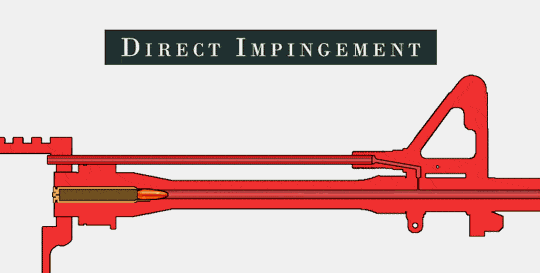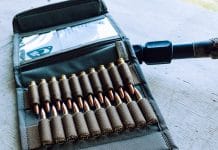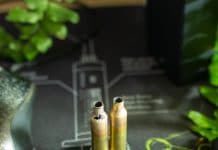First of all, we need to understand how a gas gun (the AR) works.
Essentially, a gas gun uses some of the gas that is propelling the projectile to also cycle the gun. In an AR, this gas is fed back to a cavity between the bolt and the carrier via the gas block on the barrel. The gas pushes the carrier rearward which in turn unlocks the bolt. The carrier continues rearward under its own inertia, pulling the bolt along with it and extracting the spent casing. The bolt carrier group travels to the rear of the buffer tube resetting the hammer in the process and allowing the spent casing to be ejected. The action spring in the buffer tube then pushes the bolt carrier group forward, picking up another round and chambering it. Putting the gun into battery – ready to fire again.1

With a factory, unmodified rifle – it is quite possible that a lot more gas than is required to operate is pushed back into the chamber. While this ensures good reliability and the ability to cycle any ammunition you are likely to feed the rifle, it also means you may be experiencing more recoil, more wear and more gas spitback (ask a leftie shooting a right ejecting AR about this) than is necessary.
Suppressing a Gas Gun
Now, put a device on the end of your barrel that essentially ‘holds back’ even more gas and you can see we have now created a situation of ‘over-gassing’ – that is, driving way more gas back into the chamber than required. We are now at the point where we might be driving the gun harder than the factory intended, so it becomes a very good idea to find a way to reduce the amount of gas that is going back down into the chamber and bolt.
Reduce the gas, reduce the recoil
The gas that is sent back towards the shooter affects how fast and hard the bolt slams back in the receiver – this is felt by the shooter as part of the recoil pulse. First, we feel the recoil of the gases coming out of the barrel, secondly, we feel the recoil and the bolt physically moves back in the receiver and cycles the gun. By reducing the amount of gas that is sent back into the chamber, we can reduce how hard the bolt (and buffer) has to work. This can result in a lighter firing gun – meaning, less perceived recoil, quicker follow up shots and a smoother gun to shoot.
However, to little gas, and the bolt won’t be able to reset properly. This could result in the bolt not going back far enough to pick up another round.
Muzzle devices on the end of the barrel will affect how much gas gets sent back (a suppressor increasing it a lot) and the type of ammo and how much pressure it generates will also change the operation of the gas system.
Tuning the Gas System
If we are able to essentially tune the amount of gas being sent back, we can find a sweet spot on the rifle where the ammo used generates enough pressure to reset the firearm reliably, but reduces the additional kickback and therefore keeps recoil down.
Because we are likely to want to take the suppressor on and off, and, because people like to try different ammo for different purposes, a gas block that allows to you selectively change the amount of gas being sent back to the chamber become a very good idea. Hence, the adjustable gas block.
The AGB2 from D.F. Maisey Gunsmithing
Dean Maisey is a name well known for quality gunsmithing work. Based in Tauranga, the only complaint I have ever heard about him is simply the fact that he is always so busy, there is a bit of a waiting time to get work done. This is a result of plenty of people wanting the services on only one man.
In addition, though, Dean also manages to find a bit of time to develop his own muzzle breaks, suppressors and, the subject of this article – adjustable gas blocks.
The AGB2 is the second generation of Dean’s adjustable gas blocks. The AGB1 is still available, but it is the slimline AGB2, designed to fit under the modern free floating handguards that are often seen in competition these days, that may be of more interest to you guys.
The main feature, for me, that makes everything so much easier – is the detented (i.e. clickable) adjustment screw. This means once you tuned the system (see the video for details on how to) – you simply remember the amount of clicks from closed for that particular ammo/muzzle device combo, and can quickly adjust from one setup to another. It is so easy. In addition, there is no ‘lock-tite’ to apply, and no chance that the setup will change on you.
thanks to Alex McKenzie for the awesome rework of this section! ↩





















You must be logged in to post a comment.